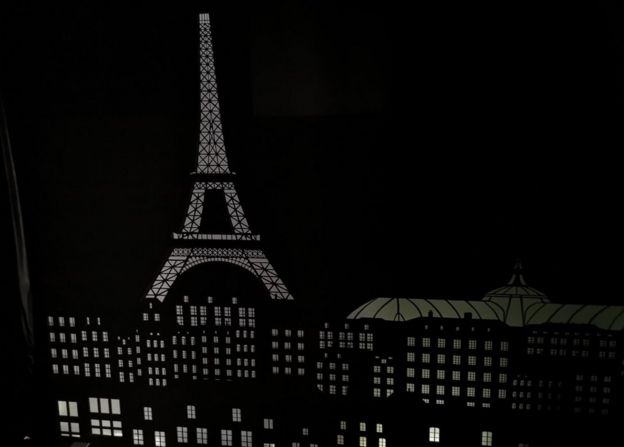[caption id="" align="aligncenter" width="660"]
 The P20 Pro uses Android 8.1 and has a Kirin 970 processor.[/caption]
The P20 Pro uses Android 8.1 and has a Kirin 970 processor.[/caption]The giant technology of china, Huawei, has introduced its new smartphone with which it aspires to surpass their rivals, Apple and Samsung: the P20 Pro.
The model is able to capture images in conditions of near-total darkness without using a flash or tripod. You can achieve exposures of up to six seconds to get all the light possible, and without movement.
The P20 Pro uses a system of stabilization by artificial intelligence to avoid blurred pictures usually associated when you take them with the hand, exhibitions of long duration.
The chinese company told the BBC that it expected its flagship model becomes the trademark of smart-phones most sold in the world.
Currently Huawei holds third place, after Samsung and Apple, in part because the telecommunications networks, americans have refused to sell the devices Huawei in the country.
[caption id="" align="aligncenter" width="702"]
 The bet of Huawei with its P20 Pro is based mainly on its cameras.[/caption]
The bet of Huawei with its P20 Pro is based mainly on its cameras.[/caption]Like the series of Galaxy phones S9 from Samsung, which were launched in the market recently, the stake of Huawei with its P20 Pro is based mainly on their cameras.
Huawei, however, overcomes the giant south Korean: while the Galaxy S9 are equipped with two lenses on the back, the P20 Pro has the distinction of being the first smartphone with three cameras.
"Huawei does not have the brand that you have Samsung or Apple, so I had to do much more in terms of your product," he told the BBC's Ben Stanton, of the advisory firm technology Canalys.
"And it's nice to see that they are taking the lead with the hardware you are producing".
But as pointed out by Stanton, with the technology of the cameras can only know how good it is when comparisons are made of the photographs that they produce each one of the devices.
"That's why Huawei has put a series of new additions," he adds.
[caption id="" align="aligncenter" width="756"]
 The P20 Pro is the first smartphone in the market that has three cameras in the back.[/caption]
The P20 Pro is the first smartphone in the market that has three cameras in the back.[/caption]The P20 Pro will cost about US$1.115, less than the price of the Galaxy S9+ ($1.175), and the iPhone X (which begins at US$1.423).
Three lenses
Each of the chambers in the rear of the P20 Pro offers different capabilities.
The main sensor has an unusual high resolution of 40 megapixels, and its third lens has an 8-megapixel sensor.
And uses a software "Light Fusion" capable of capturing up to four times more light than any other camera installed in a smartphone thanks to its pixels are much larger: 2 nanometers compared to the 1.2 or 1.4 of the other cameras.
In addition the luminosity of the P20 Pro reaches a ISO to 102,400, which up until now has not been seen in other device in the market.
The benefit is that the images taken in conditions and low light must have much less "noise" as a result.
"If you take an area of a table and you put 40 small buckets on it, and it is raining, it will take more time to fill with 2.5 cm of rain each of them that what it would take to fill 10 buckets of four times the size," says the marketing manager of Huawei, Peter Gauden.
"And that is essentially what we are doing. Using the "light fusion" to combine four pixels small together to create a pixel much larger and therefore improve our ability to absorb light towards the sensor".
The P20 Pro uses technology of recognition of objects to automatically adjust your settings and adapt to each subject, and then lists the images, which you can do without having to send the data to the internet.
[caption id="" align="aligncenter" width="711"]
 The BBC took this picture with the P20 Pro in near total darkness conditions using a long exposure shot.[/caption]
The BBC took this picture with the P20 Pro in near total darkness conditions using a long exposure shot.[/caption]Like the Galaxy S9, the P20 Pro has a feature of super slow motion with the 960 fps can film at a resolution of "hd" 720p.
Without movement
But perhaps what is more outstanding about the P20 Pro is your "trick" for shooting long-exposure.
Just hold the phone for about six seconds trying to make the hand tremble as little as possible and the phone automatically does the rest. What comes out is a picture without movement with good light.
To achieve this, says Huawei, the device uses its artificial intelligence system to automatically scan the scene and apply a number of presets selected.
The outcome, or an picture without the movement that you usually have to use this technique.
The other features of the P20 Pro: 128 GB of storage, a screen of 6.1-inch OLED display, a processor Kirin 970, 6GB of RAM and battery 4000 mAh. It also features dual-SIM and card reader microSD.
SOURCE > P20 Pro, el primer teléfono con tres cámaras con el que Huawei, el gigante tecnológico chino, quiere superar a Apple y Samsung


No comments:
Post a Comment